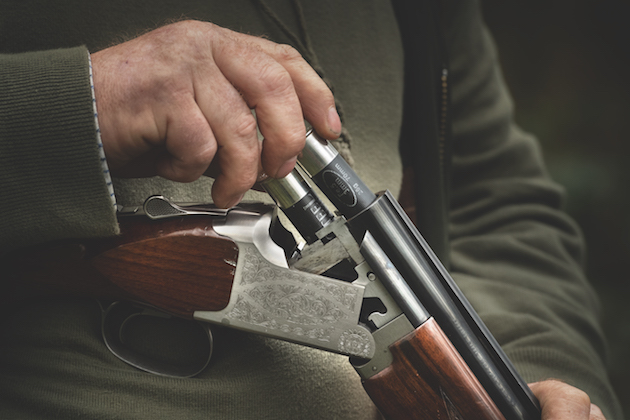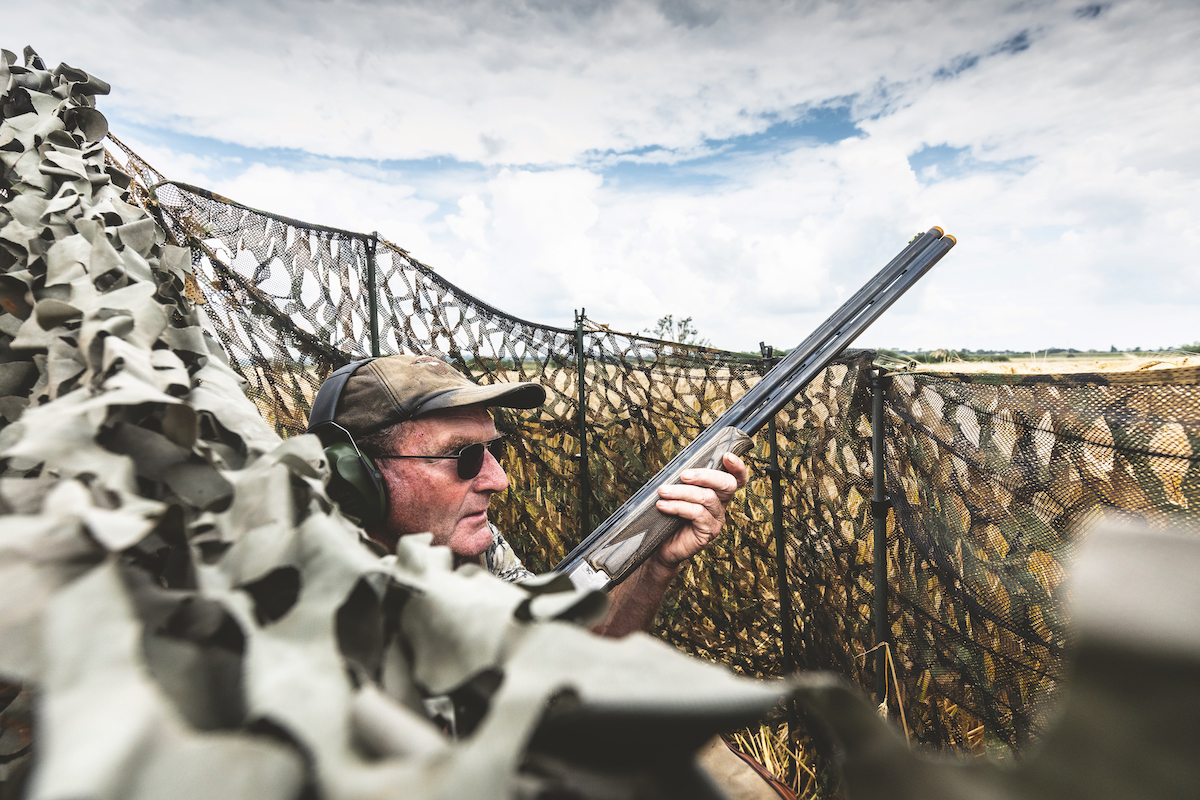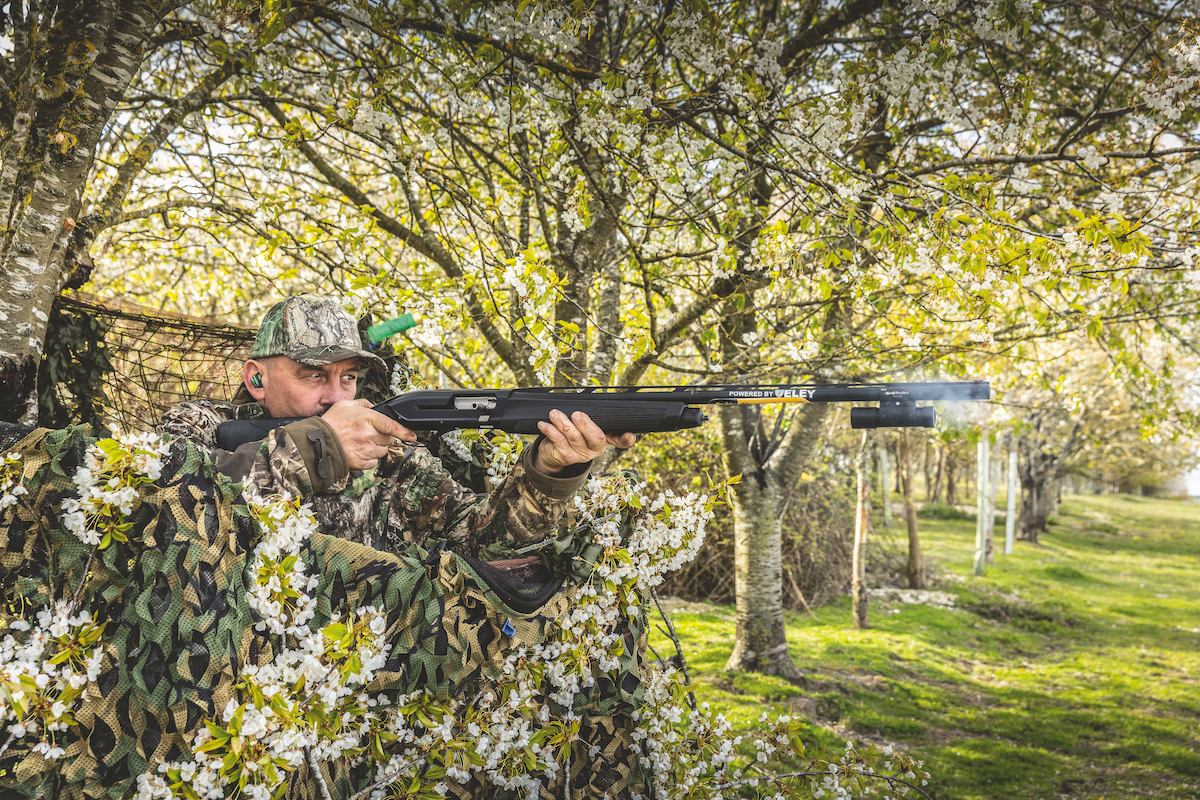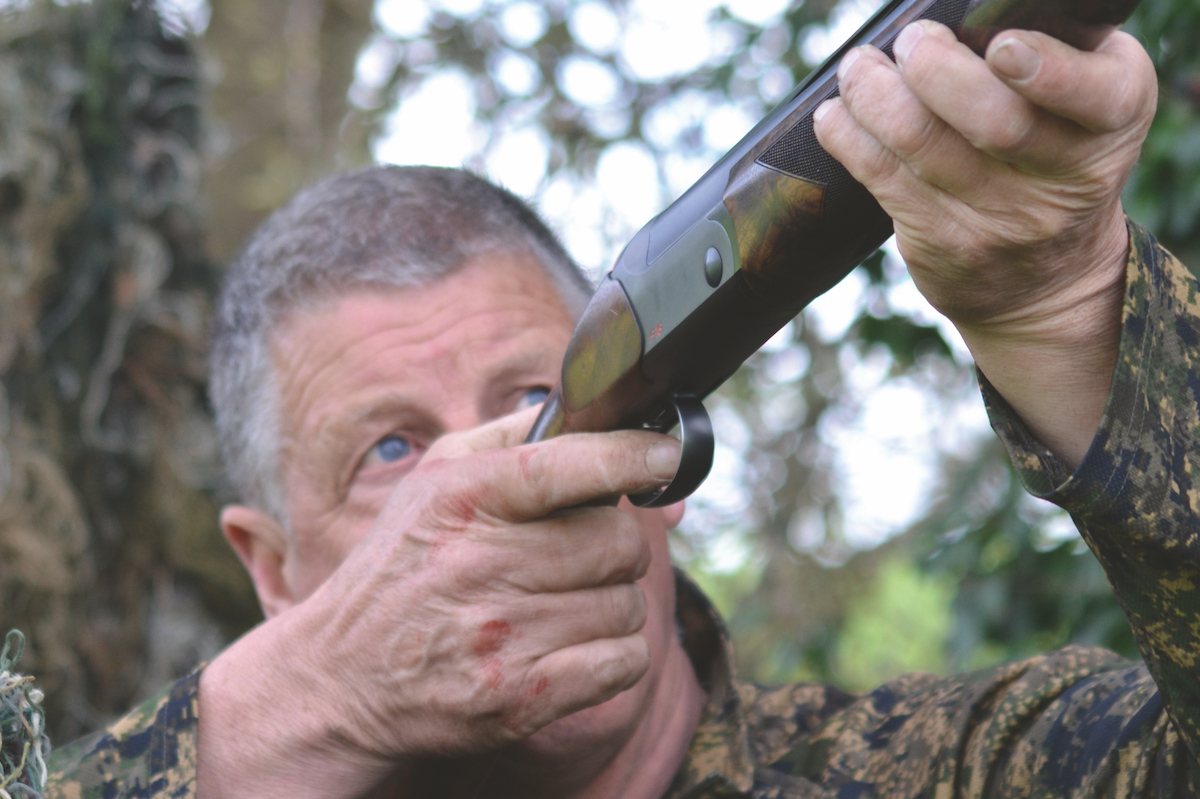Testing steel vs lead shot on pigeon
Amid all the discussion over steel versus lead shot, Ed Wills sets up a practical test with both to compare the lethality as well as the ethics

Loading steel cartridges
British shooting has been divided in recent months by the announcement on the withdrawal of lead shot within five years. While many view the decision to phase out lead and move towards alternatives such as steel as a strange route to go down, I see it as a potentially positive step.
Testing steel shot against lead
In light of the decision, I wanted to investigate the difference in impact between lead and steel shot with similar strength of load to see whether steel can really cut the mustard in the field. So an investigation testing steel shot was organised.

Ed Wills takes a left-to-right crosser with the lead cartridge
Clay and game
I met up with our resident pigeon man, Tom Payne, in Hertfordshire to begin the investigation. He was joined by locals Tom Craig, a pub owner, and Darren Hannible, a builder. They all would be using Hull’s steel clay and game cartridges, 24g No 7 and 28g No 5 respectively, and I would be on lead’s side, using Hull’s High Pheasant 30g No 6. The aim was to measure the penetration of steel, which is a key factor in how lethal and ethical the shot is.
We arrived at the small circular wood where Tom had had success a fortnight earlier shooting 72 pigeon. My spirits soared when I watched at least 150 pigeon take flight when the first twigs cracked beneath our feet.
Darren, who knew this wood best, directed Tom C and me to different points and placed himself behind us. The flightline was coming off a rape field and entering the wood over a grass paddock.
The first shot to ring out was from Tom down in the gully and a bird tumbled down through the trees. The steel had done its job and the pigeon was motionless on the floor. The shot prompted other pigeon, which had been sitting idly, to take flight and I managed to take a left-to-right crosser. Darren took another bird over my head as I was looking the other way. This shot, however, caught the wing and when Bubble, my cocker spaniel, had retrieved the bird, I could see the shot had smashed straight through the wing joint, rendering it useless.

Tom Payne and Darren Hannible discuss the steel shot pattern
Cartwheeling
Over the next hour the odd pigeon drifted in past Tom, who expertly sent them cartwheeling. But the numbers we had seen on our arrival to the wood had evidently decided that another place better suited them and by 3.45pm we were told to pack up as a stalking party was heading out and needed the area to be left quiet. A total of seven pigeon was shot, which was more than enough to see the difference between the two cartridges. We returned to Tom’s pub, the award-winning Woodman, to catch the remaining minutes of the rugby — but, more importantly, to ascertain the power of the steel versus lead.

Shot pigeon were plucked to show the impact of the steel pellets
Small, round holes
When Tom opened up the pigeon it was immediately apparent that those shot with steel had received a far more powerful impact than the ones shot with lead. The breastbone was peppered with small, round holes where the metal balls had punched their way through effectively. They had gone straight through the bird, leaving no pellets embedded in the meat. When we inspected the lead-shot carcass, small bumps along the breastbone indicated that the pellets had lodged themselves within the bird.

You can clearly see the kill pattern of a steel cartridge on the breast of the shot pigeon
“Have you been out shooting?” a woman asked me as I headed into the main room of the pub, intent on tasting the ale that had won so many awards. I replied I had and she asked me whether she could take some pigeon home, as she had never eaten it before. She wanted her son to stop eating processed food such as pizza.
I pointed out that these birds were shot with steel. “What difference does that make?” she asked. “A different metal in the pellets, which the shooting community are moving towards, rather than using lead,” I explained. “Marvellous” she exclaimed and thanked us all as I passed her a bag of 10 breasts.
This goes to show that the move from lead to steel could result in an increase in the consumption of game from people who have previously never tried it.

Ed’s cocker spaniel, Bubble, retrieves another pigeon successfully
This first test of the steel cartridge had been surprising. Not only had the steel performed just as well as the lead but it was also more effective in power, leaving those clean holes. The lead pellet usually penetrates roughly an inch or two into the carcasses, whereas the steel passed right through, leaving a hole length of 5in.
The next step will be to test the steel at different ranges to get a broader picture of the impact damage. The move to steel shot is one that will be looked upon with great interest because it is the future of our sport. However, many more tests will need to be carried out to give a real representation of what this metal can do.

Tom Payne inspects the pattern plates after shooting with Hull’s 24g No 7 steel cartridge
Tom’s take on testing steel shot for pigeon shooting
After taking delivery of 4,000 Hull cartridges in various steel loads and shot sizes, my priority is to thoroughly field test them over the coming months, focusing on working out a shot size and load size that kills and performs well. It is going to take a lot of work, but Rome wasn’t built in a day.
Like most, I need to feel confident that any cartridge I use kills cleanly and consistently across all distances. Apart from shooting wildfowl, my understanding of steel is minimal so this is just as much a learning curve for me as it will be for others. I’ve decided to field test in a very in-depth way, not only seeing the results but studying the dead birds at the end in detail. I am focusing on pattern, shot strike and density, speed and penetration — the key factors that result in good clean kills.
Recoil
My first step was to head to the clay ground just to see what steel is like. To give consistency all shots were taken using half- and half-choke. What was apparent to those of us shooting steel was the increased recoil. Not massive, but it was noticeable for such a light load of 24g No 7. The reason for the increase in recoil is the pressure increase in shooting steel.
This pressure also makes
a significantly louder muzzle blast.
With there being no give in steel, it needs more push when it comes
out of the business end.
Though the clays broke well,
it was almost impossible to get that classic lead impact and a cloud of dust from centring the clay. With my limited knowledge of steel, I can only put this down to energy transfer on impact. Steel is lighter and as it doesn’t change shape on impact, it retains the energy so carries on through the clay.
We moved on to pattern test the steel clay cartridge at 30 yards. Though there was a good pattern, there were also plenty of gaps. A comparison between the lead 30g No 6 and the steel 28g No 5 showed them to be very similar. Steel is well known for throwing good patterns so it was no huge surprise.
Into the field
The birds that showed in the wood were not extreme and roughly ranged from 25 to 30 yards. Tom Craig, shooting with a light Beretta, found the recoil noticeable but got used to it and killed some very good birds. Darren again noticed the recoil but it was less pronounced in his heavy Miroku.
At the end of the afternoon I was more interested in getting these birds plucked to look at the damage done. Examining the birds in the feather, there was little difference in pellet strike.
Where to sell your woodpigeon
A gamedealer Gamedealers will be more than happy to buy woodpigeon and, depending on the time of year and numbers…
How to prepare and dress a woodpigeon
Woodpigeon shooting provides fantastic, healthy meat and is a sustainable food source. The pigeon is an agricultural pest but it…
As an additional test to see where and how I can improve and start to see the effectiveness of steel, I placed the dead birds, chest out, at 30 yards. We shot one with the steel and one with the lead to show the full pattern strike for both cartridges.
Dissecting the two pigeon, I looked not only at the penetration of the pellets but also the internal damage. What I found interesting is that the lead had been contained within the bird’s carcass. As the lead strikes the body and changes shape, it transfers all the energy into the bird. This is what strikes the lethal blow to major organs.
With the steel, the impact was huge but the behaviour of the pellet was understandably different. Much to my surprise, up to four pellets had carried cleanly through the carcass and straight through the back of the bird. The steel had also torn through the liver and the top of the heart. As a killing blow this would certainly do the job, but it left me wondering that at these normal distances, if the vitals are not struck, will there be enough energy to kill the bird cleanly?
It’s going to take thousands of shots and quarry to draw a good conclusion about testing steel shot for pigeon and be confident moving forward, but this is a good start. TP










